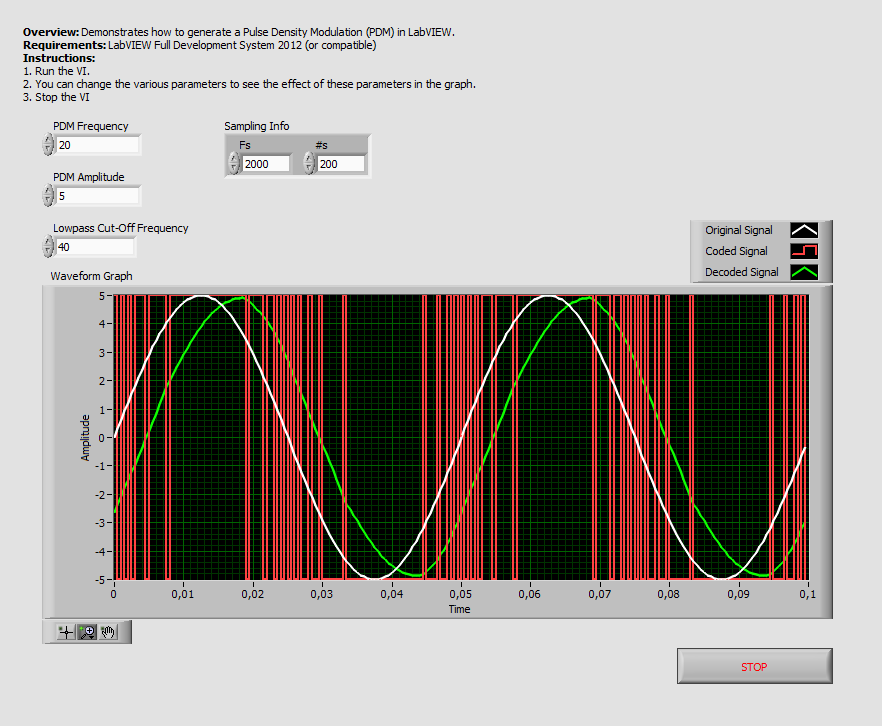Pulse Density Modulation PDM
- Subscribe to RSS Feed
- Mark as New
- Mark as Read
- Bookmark
- Subscribe
- Printer Friendly Page
- Report to a Moderator
Products and Environment
This section reflects the products and operating system used to create the example.To download NI software, including the products shown below, visit ni.com/downloads.
- LabVIEW
Software
Code and Documents
Attachment
This example demonstrates how to generate a Pulse Density Modulation (PDM) in LabVIEW.
Description
Pulse Density Modulation, or PDM, is a form of modulation used to represent an analog signal in the digital domain. In a PDM signal, specific amplitud values are not encoded into pulses as they would be in PCM. Instead it is the relative density of the pulses that corresponds to the analog signal's amplitude.
This VI simulates an analog signal, modulates it using PDM and restores it to an analog signal.
Requirements
Software
- LabVIEW Full Development System 2012 (or compatible)
- If running in a Real-Time context, you will need the LabVIEW Real-Time Module 2012 (or compatible)
Hardware
- No hardware is necessary to use this example VI
Steps to Implement or Execute Code
- Download and open the attached VI
- Run the program
Additional Information or References

**The code for this example has been edited to meet the new Community Example Style Guidelines. The edited copy is marked with the text ‘NIVerified’. Read here for more information about the new Example Guidelines and Community Platform.**
Principal Systems Engineer // CLA // CLED
Example code from the Example Code Exchange in the NI Community is licensed with the MIT license.
- Mark as Read
- Mark as New
- Bookmark
- Permalink
- Report to a Moderator

